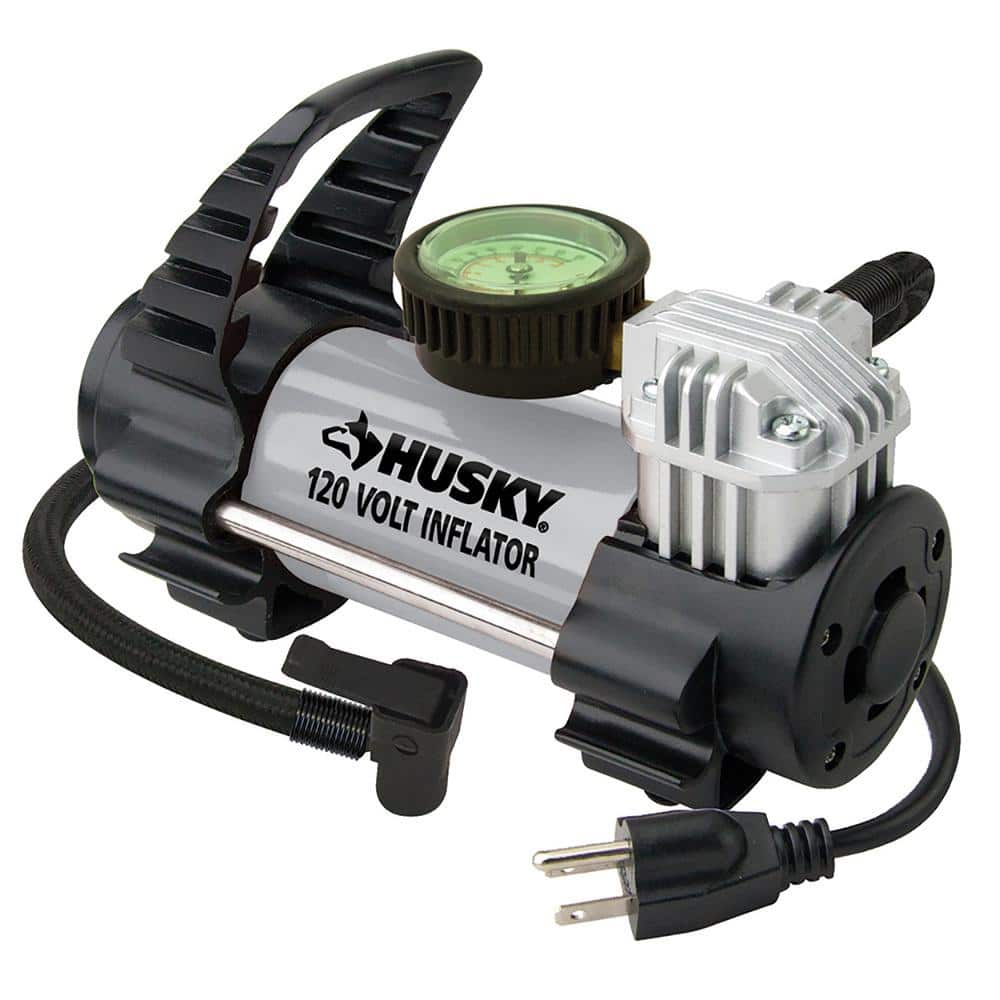- :
- Occupied Calif.
- :
- 2019 CX 5 GT-R
I check the tire pressures and give them a quick inspection for things like nails in the treads every couple of weeks. It had been a while since I checked the pressure in the spare though. It is a PITA to check as since the valve stem points down, you have to pull the spare from the trunk to put a gauge on it.
Mine read 45 lbs, it should have been 60 lbs.
I have a bicycle pump that I use to ad a few pounds as necessary to the running tires but that wasn't going to cut it to top off the spare. I remembered seeing a review on YouTube done by Project Farm for tire inflators. I didn't want a 12V model that plugged into one of the sockets on the car so I went to Home Depot and bought this sucker which had received high marks in the review:

The drawbacks are that the power cord is very short so you will need a 3 prong grounded extension cord, and the air hose is also very short. That was no problem to fill the spare but if you want to fill the tires that are mounted you may need to move the vehicle a few feet back or forth to make sure the valve is at the bottom. But for $22.97 I can't complain. It only took a few minutes to go from 45 to 60 lbs and the pressure gauge on the inflator was accurate within a couple of pounds when checked against my ANSI Certified tire pressure gauge.
By the way after buying a certified gauge I found out that the gauge that I have kept in my vehicles for almost 20 years was reading 2 lbs high. Here is the gauge that I now use:
https://www.amazon.com (commissions earned)
Mine read 45 lbs, it should have been 60 lbs.
I have a bicycle pump that I use to ad a few pounds as necessary to the running tires but that wasn't going to cut it to top off the spare. I remembered seeing a review on YouTube done by Project Farm for tire inflators. I didn't want a 12V model that plugged into one of the sockets on the car so I went to Home Depot and bought this sucker which had received high marks in the review:

Husky 120-Volt Corded Electric Inflator HY120 - The Home Depot
Inflate a vehicle tires, bicycle tires, air mattresses and sports equipment with the selection of this Husky Inflator. Offers lasting durability.
www.homedepot.com
The drawbacks are that the power cord is very short so you will need a 3 prong grounded extension cord, and the air hose is also very short. That was no problem to fill the spare but if you want to fill the tires that are mounted you may need to move the vehicle a few feet back or forth to make sure the valve is at the bottom. But for $22.97 I can't complain. It only took a few minutes to go from 45 to 60 lbs and the pressure gauge on the inflator was accurate within a couple of pounds when checked against my ANSI Certified tire pressure gauge.
By the way after buying a certified gauge I found out that the gauge that I have kept in my vehicles for almost 20 years was reading 2 lbs high. Here is the gauge that I now use:
https://www.amazon.com (commissions earned)
